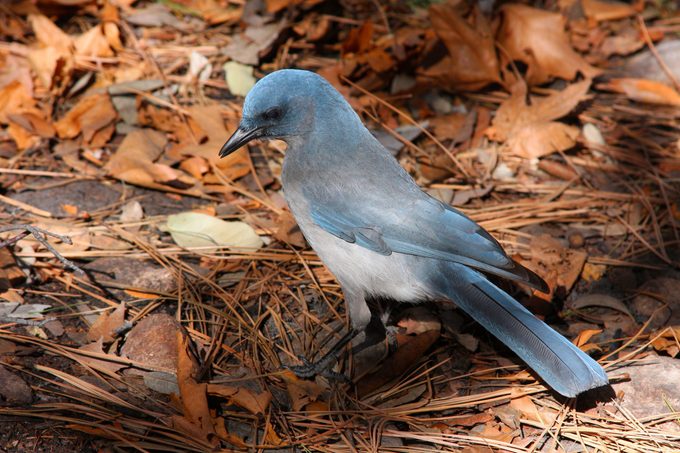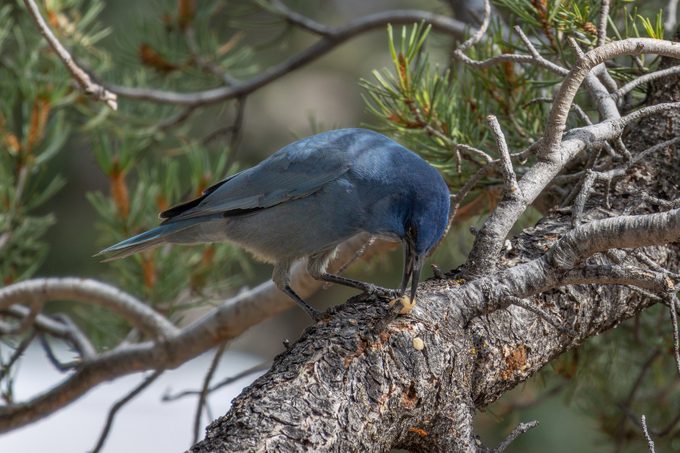How to Identify and Attract a Pinyon Jay
Updated: Jan. 24, 2023
Swoop into the unique world of the pinyon jay! Discover what the birds eat, where they live, and what makes them unique among jays.
What Does a Pinyon Jay Look Like?

Often described as looking like a small crow, the pinyon jay is a medium-sized blue-grayish bird. Male and female pinyon jays are identical, so you won’t be able to tell them apart based on appearance.
Pinyon jays travel and nest in flocks, with some groups containing several hundreds of birds. As with other corvid species, pinyon jays often form strong family bonds. Parents and young can remain together their whole lives, in the same flock into which they were born.
Meet the Steller’s jay—bold, beautiful black and blue birds.
Nests and Eggs
Pinyon jays nest in pinyon pine trees, ponderosa pine trees, oaks and junipers. They nest near the end of winter; the male provides the female with sticks to build the nest’s exterior. Amusingly, the birds may steal materials from another pinyon jay’s nest if the structure is left unattended. (Canada jays are also known for their antics—including pilfering food from unsuspecting humans!)
Typical clutch sizes include two to five eggs. The blue eggs with brown spots incubate for a little longer than two weeks. Three weeks after hatching, the youngsters are ready to fledge.
Psst—baby crows are much cuter than you think.
Pinyon Jay Call and Sounds
As with many other members of the jay family, you won’t miss a pinyon jay’s call. It gives a series of high, nasally caws reminiscent of that of a crow.
Get to know the blue jay, another corvid with an unmissable call.
Pinyon Jay Range and Favorite Foods

The pinyon jay is unique in that it primarily resides in Southwestern pinyon woodlands, its range stretching from California and central Oregon to western Nebraska and Colorado. Pinyon-pine seeds are its food of choice.
These birds are technically omnivorous and do eat insects, berries and small fruits, but pinyon seeds make up most of their diet. That said, you might attract them to feeders with cracked corn, suet, sunflower seeds, or a classic jay favorite food: peanuts.
Are Pinyon Jays Endangered?
Unlike several other species of jay, pinyon jays are somewhat uncommon. Because of deforestation and other forms of habitat loss (such as wildfires and other natural disasters) their numbers are decreasing.
Partners in Flight notes an 83% decrease in their population between 1970 and 2014, while the U.S. Forest Service says populations have declined 3 to 4% each year throughout the past half-century. They have this in common with the Florida scrub-jay, whose numbers have also fallen in previous years.
Did you know: the blue jay range is expanding westward.




















